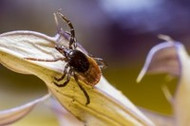A New Possibility for Detecting Lyme Disease
Posted by Deerbusters on 12th May 2014

Every year, the Centers for Disease Control records more than 30,000 cases of Lyme disease, a bacterial infection that is found throughout the U.S. and is carried mainly by deer ticks. The disease can be hard to diagnose, however, because many of the symptoms are sometimes found in other illnesses (such as mononucleosis, fibromyalgia, meningitis, etc.).
Many people who were diagnosed in the past still suffer from post-treatment Lyme disease, which means even though they were given antibiotics, they still experience symptoms like fatigue and muscle aches. Current tests can’t determine whether the disease has been eliminated from people who have been treated, so there is no sure way to tell whether the bacterium Borrelia burgdorferi (responsible for the Lyme) is still in their system.
According to Fox News, however, there may be a new way to identify this. In a recent study published in the Clinical Infectious Diseases journal, 25 people who were previously diagnosed with Lyme disease and treated with antibiotics were collected. Ten of them had post-treatment Lyme disease, while the other 15 didn’t.
“While most patients improve after taking antibiotics, some patients continue to have symptoms,” the researchers said. “One possibility is that the antibiotics have not successfully gotten rid of all of the bacteria.”
All 25 people were then exposed to disease-free ticks, which were allowed to feed on their skin. The goal was to find out if, through sucking blood, the ticks could pick up Lyme bacterium in their systems. Of the 23 acceptable participants, 19 tested negative for Borrelia burgdorferi while two tested positive (the last two were indeterminate).
More studies will be conducted to see if those who tested positive did so because they have live organisms in their bodies or just remnants of the infection. If researchers can find a tie between positive tick testing and the Lyme bacteria, there may be a new way to detect the disease.
More About Lyme Disease
Lyme disease is prominent in the Northeast, the Midwest, and along the West coast of the U.S. The deer ticks that carry the disease are very small and can be found in wooded and grassy areas. If you are bitten by a tick, remove the entire tick from your skin immediately. If you remove it within 24 hours, there is little risk of Lyme, but just to be sure, look for a rash that occurs in about 75% of Lyme disease cases. This rash is usually where the tick was located and will be red in color and round or triangular in shape. If you discover a rash, see a doctor immediately, as symptoms become worse in the later stages of the infection.

